Большой Кавказ: социально-политические процессы. Рубрика в журнале - Вестник ВолГУ. Серия: История. Регионоведение. Международные отношения
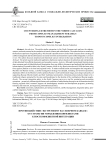
Статья научная
Introduction. The article studies extremism in the North Caucasus and analyzes the subjects, sources, and main reasons for the escalation of armed violence and radicalization. The author focuses on examining the Russian experience of regional policy, which made it possible to move in the North Caucasus from a strategy of conflict management and forceful measures to counter terrorism and extremism to post-conflict integration. Literature review. The author discusses empirical and theoretical sources relevant to the topic and objectives of the study. Methods. The article uses the method of qualitative diachronic analysis based on the collection and interpretation of data obtained from official documents and secondary sources. Analysis. Although transnational Islamist groups share common goals of global jihad and Islamization, they may differ in discourses and methods that facilitate the indoctrination of extremist ideas in the North Caucasus, which is why Russia since the mid-1990s has been using force against jihadism at its local and regional levels. To reduce radicalization and strengthen the integration of Muslims into Russian society, a conflict management strategy was adopted, including anti-terrorist operations; diplomatic efforts in the Muslim world to optimize Russia’s multi-confessional image; and a large-scale policy of supporting Russian Muslim leaders and their traditional communities. Domestic policy proclaims Islam to be a traditional religion protected by the state and foundational to the identity of the multinational Russian people. Results. The current integration policy in the North Caucasus serves as a tool for countering and preventing extremism – proactively influencing the factors and conditions of radicalization through a set of measures aimed at forming regional elites, economic support via interbudgetary transfers and development programs, promoting tolerance and inclusion, and organizing informational activities.
Бесплатно
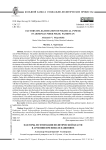
Factors of Legitimation of Political Power in Armenia Under Nikol Pashinyan
Статья научная
Introduction. The article analyzes the features of the functioning of political power in Armenia during the rule of Nikol Pashinyan. The authors determine the factors of legitimation of the political regime in modern Armenia. Methods and materials. Using the method of biographical analysis, the authors construct a political portrait of the Armenian prime minister. With the help of factor analysis, the most important factors of legitimation of political power in modern Armenia are highlighted. The sociological method is also used, recording the mood of Armenian society in certain situations arising in Armenian political life. Analysis. Nikol Pashinyan has the image of a politician who defends the interests of Armenia both within the state and in the external contour. This is predetermined by his political experience and the balance of power in the Armenian political elite. The factors of legitimation of the political regime depend on the current economic situation. The role of the Armenian political culture is also high. It is characterized by short expectations and a high emotional component. There are also special expectations of the society from a specific politician who is trusted to overcome the current political and economic crises. Results. The Armenian leader is constantly puzzled by questions of his legitimation. N. Pashinyan still has enough political experience to maintain political stability in the republic. Today, this is difficult to achieve, given the grave consequences of the defeat in the Karabakh conflict. One can see how his rhetoric changes in the case of the Collective Security Treaty Organization (CSTO). Relations with Russia are subject to high dynamics. The Armenian leader is trying to position himself as an ally of the West, improving relations with the USA and France. China is gradually taking on the role of an important geopolitical partner. Relations with Turkey are normalizing. The political maneuvering of the Armenian prime minister may confuse geopolitical partners. However, such behavior largely meets the interests of the state and N. Pashinyan’s voters. The authors believe that the current political situation plays into the hands of the Armenian leader, who managed to convince society of his indispensability. Authors’ contributions. A. Skiperskikh examines the political process in Armenia from the perspective of challenges for the political regime. M. Yepremyan studies the connection between Nikol Pashinyan’s legitimation and internal and external factors. The authors consistently come to the conclusion that the Armenian prime minister is extracting the maximum for himself from the current political situation. The external and internal audiences receive a political signal from N. Pashinyan that Armenia is getting out of difficult geopolitical puzzles with benefit.
Бесплатно
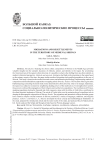
Migrations and Resettlements in the Territory of Medieval Shirvan
Статья научная
Introduction. Studying the diverse ethnic composition of Shirvan in the Middle Ages provides valuable insights into the complex dynamics of ethnicity, culture, and identity in the region. By scrutinizing the historical roots of the region’s ethnic diversity, it is possible to observe the shifting from one ethnic identity to another in historical perspective. Methods and materials. Aiming to shed light on the migrations to the region based on the primary sources of the time, the paper studies medieval migrations and resettling populations in the case of Shirvan. This study is based on the medieval textual sources and archaeological findings, implementing methods of comparison and interdisciplinary approaches to mapping ethnic diversity. Analysis. The location of the region at the Darband passage and along the transit trade routes determined its ethnic diversity. Due to its strategic importance, the region was subject to invasions by neighboring leading powers of the medieval era. To strengthen their control, these powers enforced the propagation of their religion and resettled new populations. The resettlement of Persian-speaking populations during the Sassanid and Arab conquests, along with the influx of Arab tribes, contributed to the ethno-linguistic landscape of Shirvan. The arrival of Turkic tribes over the centuries played a significant role in shaping the demographic composition of Shirvan. Results. The migrations and interactions of these and other groups have created a complex societal structure in Shirvan, marked by a variety of languages, traditions, and religious practices. Authors’ contribution. L.A. Aliyeva developed the basic concept and methodological foundations of the study, prepared the introduction article and the main results of the study, and analyzed the pre-Seljuk period. Kh. Karim analyzed the Seljuk and Mongol periods based on Persian-language sources.
Бесплатно
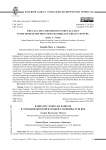
Кавказ и служба на Кавказе в сознании донской казачьей старшины. XVIII век
Статья научная
Введение. Задолго до официального начала Кавказской войны донские казаки принимали участие в боевых действиях на Кавказе, и у них сложилось свое отношение к этим событиям, которое отлича лось от романтических описаний Кавказа и войны на Кавказе, которые появились в XIX веке. Материалы и методы. Авторы анализируют написанные в XVIII в. ежегодные рапорты донских офицеров об их службе на Кавказе и выявляют личностное отношение авторов к боям на Кавказе и к региону в целом. Применялись историко-генетический, историко-сравнительный, проблемно-хронологический, контекстуальный методы. Анализ. Военные действия, которые велись в XVIII в. в предгорьях Кавказа и на самом Кавказе, в первую очередь рассматривалась казаками как война против населения Кубани и Западного Кавказа, как защита своей территории от вражеских набегов. Господствующими определениями ситуации в послужных списках казаков были «предосторожность» и «наказание». Перенос границы России на Кубань и активизация боевых действий в других регионах Северного Кавказа изменили отношение казаков к войне. Война рассматривалась, прежде всего, как царская служба, в том числе полицейская служба («усмирение»). Зафиксированные потери среди командного состава донцов в этот период были минимальны. Вклад авторов. А.В. Венков анализировал службу донских офицеров. Х.-М.А. Сабанчиев связал ее с историческими событиями на Кавказе в XVIII веке.
Бесплатно
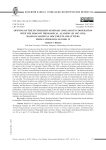
Статья научная
Во введении показана роль межцерковных связей в истории взаимоотношений народов России и Армении. После Великой Отечественной войны Русская православная и Армянская церкви вступили в период наиболее тесного сближения, которое началось с установления сотрудничества между Эчмиадзинской семинарией и Московской духовной академией (МДА). Используемые методы исследования – историко-генетический, позволивший выявить обстоятельства открытия Эчмиадзинской семинарии, метод синхронизации, с помощью которого определены формы сотрудничества Эчмиадзина и МДА в указанный период, и метод актуализации, способствующий пониманию современного уровня взаимоотношений Русской и Армянской церквей с учетом исторического опыта. В качестве материалов используются сведения из отчетов Совета по делам Армянской церкви за 1949 г., ряд телеграмм и источники личного происхождения – письма католикоса Геворга VI, адресованные его ученикам, проходившим в 1951–1953 гг. обучение в Московской духовной академии. Письма опубликованы на армянском языке в журнале «Эчмиадзин». Автор статьи осуществил перевод писем на русский язык и ввел их содержание в научный оборот. Анализ. Исследованы обстоятельства, которые привели к открытию в 1945 г. Эчмиадзинской семинарии – высшей духовной школы Армянской апостольской церкви; определена роль в этом процессе католикоса всех армян Геворга VI (Чеорекчяна). Обозначены предпосылки, повлиявшие на установление сотрудничества Эчмиадзина и МДА. Выявлены формы, содержание и результаты взаимодействия двух духовных школ в первые послевоенные годы (1947–1953 гг.). Результаты. Сотрудничество Эчмиадзинской семинарии и Московской духовной академии в 1947–1953 гг. носило взаимовыгодный характер. В данном процессе прослеживаются две формы сотрудничества: 1) научный и студенческий обмен, 2) снабжение Эчмиадзинской библиотеки богословскими изданиями Русской православной церкви. Добавив к этому фактор официальных и частных дружественных встреч католикоса Геворга VI и Московского патриарха Алексия I, можно утверждать, что рассматриваемый период послужил началом установления двусторонних межцерковных отношений, развитие которых происходит до настоящего времени, включая сферу духовного образования и богословской науки.
Бесплатно

